The cow’s head lay severed on the cobbled ground. Its eyes stared in directionless shock; its mouth gaped in a rigor mortis of anguish. The narrow, crumbling alleyways reeked of blood and faeces. The intestines of many beasts were strewn across the pavements like the tinsel of a hellish Christmas.
“Anda”. (“You”).
A gore-slimed knife was thrust into my hand. A bloodied man was insisting that I flay the cheek skin from the freshly slaughtered face. I was not in Kansas anymore.
I’m not normally squeamish about meat. I feel that we in the modern west are too disconnected from our food sources, and that we should take more responsibility and interest about where they come from. But there’s a difference between that and coming face-to-face with it quite so literally. Even I – remorseless prince of carnivores – blanched at the task ahead. But any doubts were outweighed by fear of appearing rude if I refused. How very British.
And so I set to work for as long as social etiquette demanded (a minute or so), slicing sinew and peeling skin to unveil a pearly skull – the accusing orb of the cow’s eye still eerily intact. Flies buzzed around. Thank god for portable hand sanitizer.
I was in Solo, a city an hour or two from Jogja, fittingly the first point of my unaccompanied travels. It’s a bastion of Islam in Java, and I had the good fortune (and the animals had the bad fortune) to be there for Idul Adha, the Muslim day of animal sacrifice. All through the city – and all throughout Indonesia and beyond – cows and goats were ritually slaughtered in their thousands. But this was far from an arbitrary massacre. The idea is to provide meat to families who can rarely afford it. Every part of the animals is used: all that is possibly edible is eaten, from bowels to balls; skins are cleaned to make hide and leather; bones are given to the dogs. Entire communities lined the streets, spending the whole day in a factory line of hacking, scraping, cleaning, skinning, boiling and roasting. Many cucumber sandwiches would be dropped in horror if this sort of community activity occurred at the quintessential English village fete.
After cosmopolitan Jogja and the amniotic comfort of my homestay there, Solo really was a different beast. Much less westernised, less open. But it had an intoxicating allure: lurking in its warren of colonial alleys there’s a deep sense of identity, of history, things hidden but accessible if you turned the right corner or asked the right person.
Reeling, I took myself off to the Kraton, the palace and home of the Sultan of Surakarta (currently Pakubwono XIII), who is not only related to the Sultan of Yogyakarta but is his historic rival. Compared to Jogja’s sumptuous gold leaf, Solo’s kraton is a shabby affair due to its devastation in a fire in the 1980s (retribution, superstitious locals believed, for the then Sultan’s louche lifestyle in Jakarta). But I was lucky enough to catch two events that enlivened it.
First was the spectacle of the Sultan’s private army going for its Sunday walkabout. A sword-bearing officer lightly goose-stepped at the front, his moustaches bristling proudly. He was followed by a Napoleonic-era band of drummers and fife-players and a battalion of maybe hundred or so loyal soldiers, sporting a variety of uniforms that mixed batik with weird versions of nineteenth century European military garb. They didn’t seem particularly martial – looking better equipped to eat than fight – but they marched with dignity and poise. May they guard him well.
Second, I encountered a gathering of the wider royal family, whose menfolk were resplendent in batik sarongs, medal-strewn jackets and jewel-encrusted kris daggers. They were gracious, if embarrassed, when this bule asked to take their photo in his nicest Bahasa. Or too polite to say no.
My main motive for visiting Solo was as a springboard for Candi (pron. “chan-di”) Cetho and Candi Sukuh, two Hindu temples high on nearby Gunung Lawu . I got a lift from my hotelier-turned-guide, Wayhu, on his motorbike. As we drove high into the mountains – winding past coffee plantations and rice paddies scalloped beautifully into steep hillsides – I sat behind him, arms clasping his front for stability. I reflected privately that it was like something out of a film: Easy Rider meets Brokeback Mountain, set in the tropics. A fitting if uncomfortable portent given what was to come: the temples are famous for hilariously erotic sculptures.
I was jolted out of such musings by Wayhu’s sheepish admission that I was too heavy for his bike. I had to change to a more powerful bike taxi for the last of the journey. In many tours this has never happened to him. A thought to dwell on when encountering the twin delicacies of Indonesia, sugar and MSG.
The temples rose out of steep jungle like a scene from Indiana Jones. Built in the 1400s as mountainous shelters in retreat from Islam, they felt like something from a far more primal time – full of sculptures of comically fat old ladies and raging phalluses. Yet the modern Indonesian tourists loved them. Women in Islamic headscarves posed for facebook photos beside graphic vagina sculptures. Java surprises yet again.
My next move was to take a ten-hour minibus drive to Malang in the north-east of Java – a journey punctuated by mountain scenery and the irretrievable loss of my shiny, lovely camera in an Indonesian service station. Malang, a former Dutch hill retreat, is pleasant enough, but most tourists go there to embark on package trips to Mount Bromo, an easily accessible volcano from whose lip a stunning vista can be seen: its sacred crater in the foreground, smouldering Mount Semeru – even more sacred and the highest volcano in Java – in the background.
I, however, am not most tourists. For this trip I have decided to embrace the perverse. Rather than take photos of big Semeru from little Bromo, I decided (on the basis of a cryptically brief reference in Lonely Planet) to take photos of Bromo from Semeru. My thinking was that 3676m would give me a good view.
Travel agents sometimes offer packages with 4x4s and English speaking guides. But they do not come cheap – the least expensive offer was £400 for 3 days. But the whole reason I’ve learned Indonesian is to see if I can try and organise things myself without resorting to expensive tours. Asking around, it seemed I could do better by making my own way to the nearest village, Ranu Pane, and hiring a local guide without paying any middleman.
The cheapest path is rarely easiest. To reach Ranu Pane I had to take two separate angkot – crammed taxi-minivans – to cover 30km, an ojek (Brokeback-style motorbike taxi) for 40km, walk 2km by moonlight along a closed road, then another ojek. for the last 5km. But the scenery was stunning. The road went up narrow mountain spines, past rivers and ravines chiselled cinematically into the serrated volcanic landscape. Eventually I arrived at a ramshackle homestay, soon warmed up by whisky shared by a kind Belgian and by my own Judaeo-Caledonian satisfaction at saving cash. Only partly diminished by the sound, through the walls, of the homestay’s toothless matriarch mimicking my stutter.
The next morning – after packing tent, food and warm clothes, and ominously registering my next-of-kin at the tin shack that served for the park office – I set off for the volcano, accompanied by my guide, Rian.
Rian is a lithe, tiny mountain man. When not guiding, he is the leader of the village Kuda Lumping, the rustic horse dance (as seen in the banner for this blog) which in Ranu Pane ends by everyone falling into a trance and eating glass to prove their masculinity. As you do. He does not speak English. His first language is rustic Javanese, and he speaks a perplexing Bahasa which seems to be the Indonesian equivalent of hillbilly. His mountain navigation was a lot better than his communication, however, and we muddled through on humour.
After winding our way past astonishingly lush vegetable fields – nourished by rich volcanic soil – and passing into what could have been European alpine scenery, we arrived for lunch at Ranu Gambolo, a striking azure lake about 9 miles from Ranu Pane. What should have been an idyllic picnic spot was spoiled by horrid mounds of rubbish.
Semeru has always featured large in the Javanese psyche as Mahameru – heavenly mountain of Hindu cosmology – but few Indonesians actually bothered to climb it. But then, last year, a film called 5cm came out, about a group of friends falling in and out of love on the mountain (it sounds dreadful). This has inspired a new generation of aspiring climbers. Whose enthusiasm is often greater than their aptitude. Many only make it to the lake – a pretty easy stroll – leaving mounds of cans, packets and sanitary wipes. The curse of popularity.
Things got better as the path got harder, cutting some numbers. We stopped for the night at a campsite perched below the great volcanic cone looming stark and grey above the treeline, intermittently belching great puffs of smoke that turned pink under the setting sun. We would set off for the peak before dawn, to catch the sunrise views.
Waking up from two hours of sleep snatched against Indonesian psych-up music coming from an array of portable speakers, I could tell that dark things were afoot in my bowels. Soon it became clear that my digestive system was heavily awry. But, stubbornness braver than my stomach, I decided that no ‘bali belly’ would stop me from climbing the volcano.
A big party of us set off at 1.45a.m. Quickly leaving behind most of the well-meaning 5cm fans behind, we emerged from the treeline onto the steep, lunar cone. The crater expelled a cloud of acrid, rank-smelling gas that rolled thickly past us down the hillside, part salute, part warning. It seemed like a grimly personal metaphor for the sulphurous state of affairs in my insides.
There the hard work began. Semeru is very much an active volcano. Its unbelievably steep slope is constantly carpeted by half a metre or more of ashy scree. For every leg-burning step, it seemed I slid down another two. 800m tends to take even fit climbers 3 hours. Even had I been well, it would have been one of the hardest physical activities I’ve ever attempted.
As it was, my bowels were taking on Fukushima proportions of instability. Every ten minutes or so I was forced to squat unsteadily in vertically plummeting volcanic ruts, trying to gain a brief relief from my internal volcano. Thank god the 5cm brigade were too far behind to illuminate my indignity in the beams of their specially purchased head-torches.
This inconsistent ascent continued for what seemed like days. I came horribly close to giving up. But finally, as the sunrise flickered on the horizon, we neared the top. Even in my pitiful state I could tell it was beautiful. The rugged splendour of the Tengger Caldera lay before me in front of the peach-inflected sunrise. Bromo, its lip wreathed in cloud, issued tiny pinpricks of camera flashes and sedately blew puffs of smoke. An Indonesian flag fluttered strongly in the freezing wind – scene of many a smug 5cm-inspired facebook profile picture, no doubt, but well-earned if so.
The less said of the subsequent twelve hours trekking home the better: my sleep-deprived quest for a real toilet, involving shoulder-charges towards friendly Indonesians blocking my way on narrow mountain paths, wasn’t a highlight of Indonesian-Scottish relations. But, as my grandmother liked to say, the best memories are much less fun at the time than during their remembrance and telling.
I would have gained much less in that department from a comfortable package trip to Bromo. Amongst such mountainous hardships and gastric indignity is true manhood forged.
- Solo – Kraton guards
- Solo – sultan’s army
- Solo – assembled bodyguards
- Solo – VIP transport
- Candi Cetho – an eagle-turtle-penis with three balls
- Candi Cetho
- More swastikas
- Flying Scotsman
- Candi Sukuh – eagle
- Candi Sukuh – how romantic
- Candi Sukuh
- Candi Sukuh
- Mount Semeru – foothills
- Mount Semeru
- Mount Semeru – cone
- Mount Semeru – volcanic sunset
- Mount Semeru
- Mount Semeru – Tengger caldera
- Mount Semeru – eruption at the top
- Mount Semeru – Tengger Caldera
- Mount Semeru
- Mount Semeru – the crater

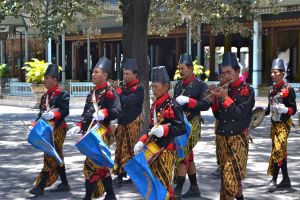
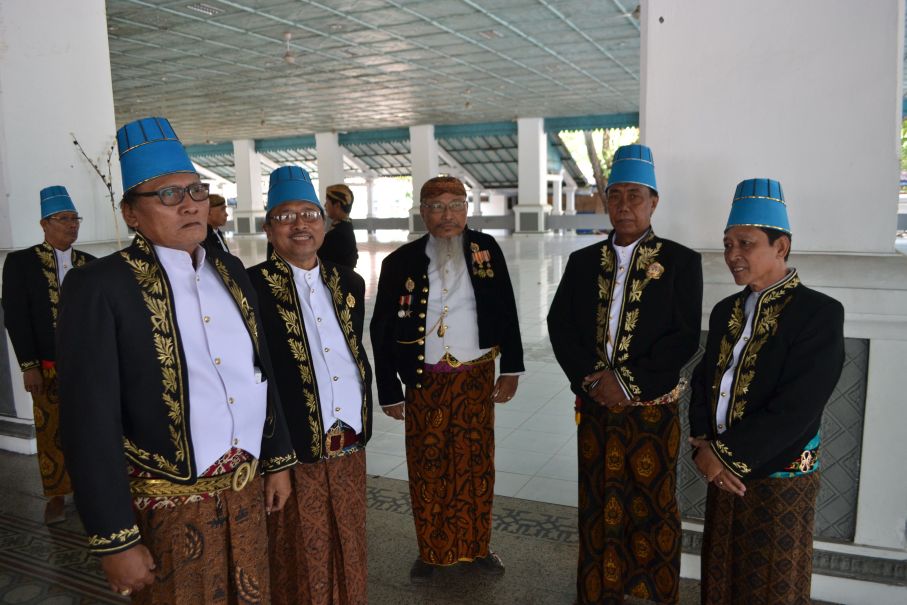

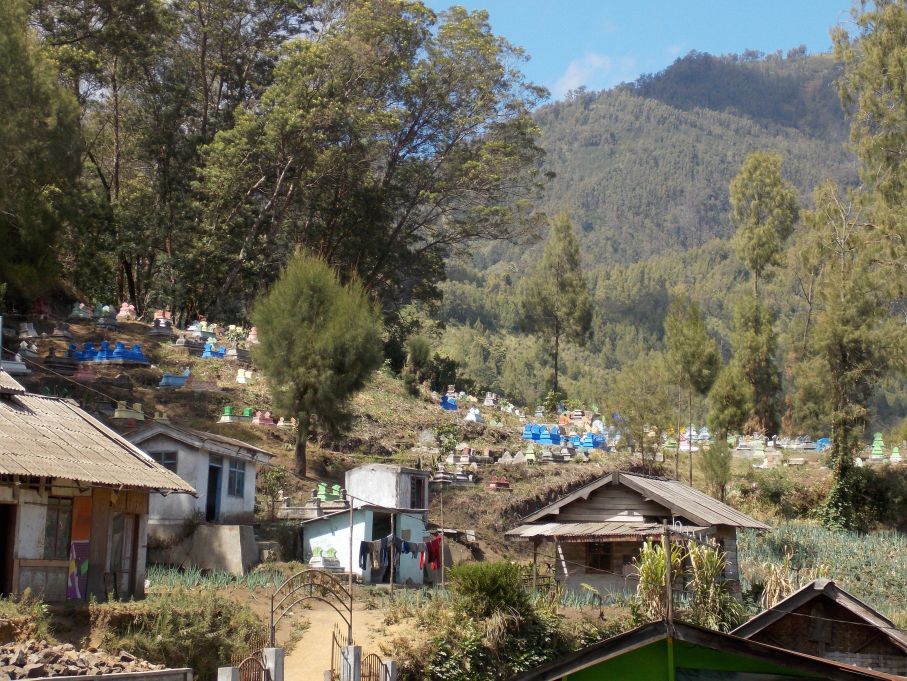
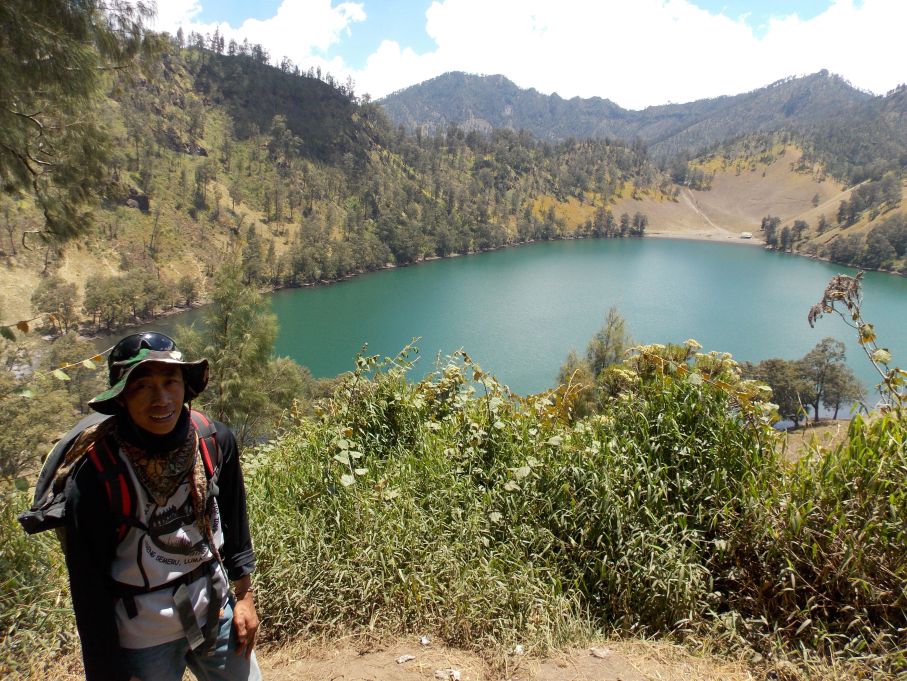
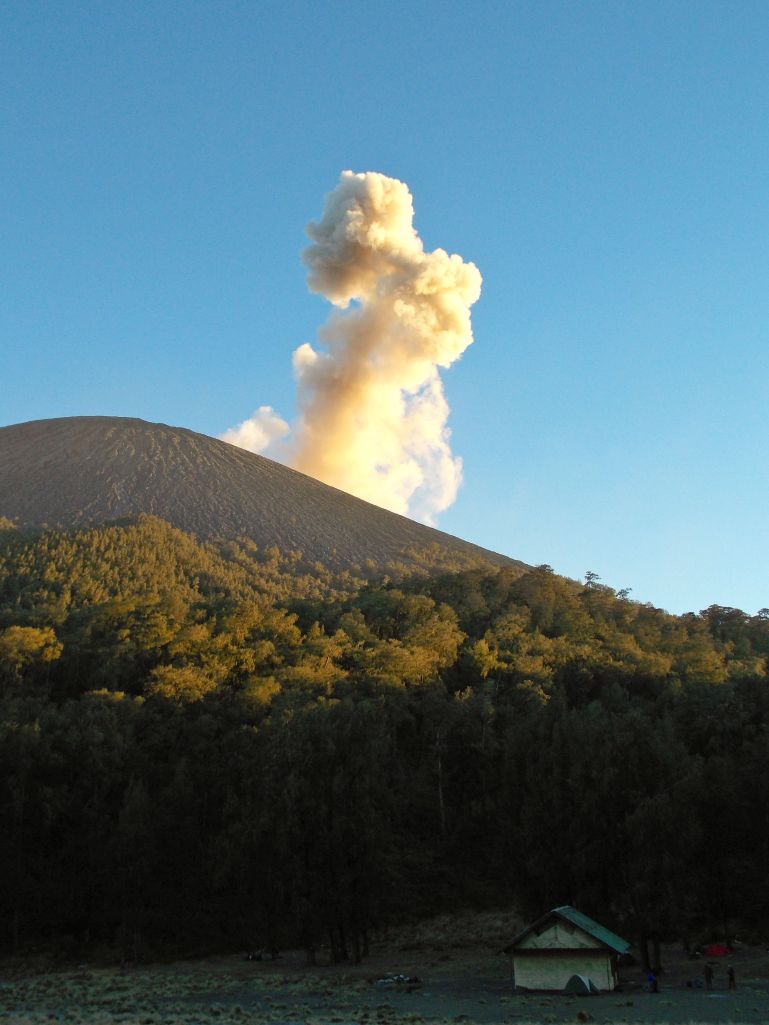
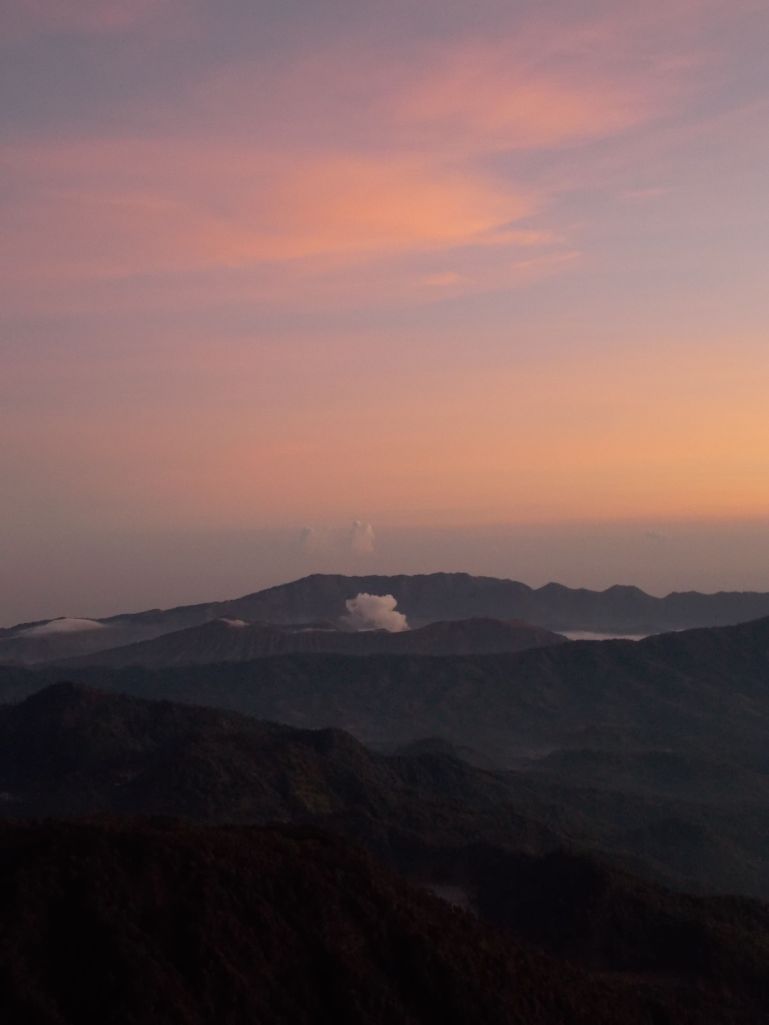






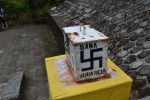








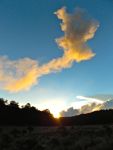
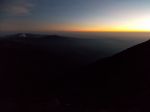

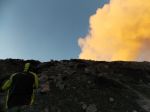
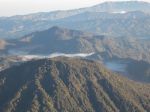
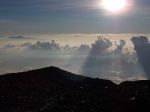

Oh Don, dont think even your time in Oxford, London and India could have prepared you for this! And on your own too! It sounds like you are having a terrific experience and thoroughly enjoying reading of your exploits. With best wishes for happy and safe travels, Cathy – Ryans Mum